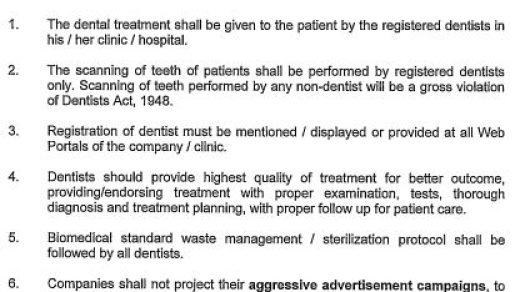Surgery for Narrow Nostrils
Narrow nostrils aren’t typically something that people view as an urgent medical concern. In fact, most people don’t consider nose deformities to be a medical concern at all. However, what people fail to consider is that the nose is a critical organ that helps us breathe. Therefore, narrow nostrils are indeed a cause for concern, especially when they affect your breathing.
Breathing is something we take for granted. No one really appreciates how good it feels to take a full deep breath until they are no longer able to. But as much as we don’t like it, events that result in narrow nostrils can happen to anyone. Fortunately, Narrow Nostril Surgery can help.
Learn more about Rhinoplasty Surgery by ENT Surgeon Dr Stephen Kleid at Coco Ruby Clinic in Melbourne Australia.
Downoad the Nose Job Surgery Guide
Many things can cause Narrow Nostrils. The treatment to widen narrow nostrils can be surgical or non-surgical. Of course, the path taken to widen narrow nostrils depends on the specific cause and the patient.
Keep reading to learn more about narrow nostrils, what causes them, and how nose surgery can help fix the problem.

What are narrow nostrils?
A person develops narrow nostrils when they experience inflammatory processes (e.g., allergic rhinitis due to environmental irritants) or anatomic abnormalities that reduce the size of the nasal airway. The resulting obstruction may cause a feeling of nasal congestion or difficulty taking a deep breath. Narrowing of the nostrils can be mild enough to be a minor annoyance or severe enough to pose a significant health risk.
One of the symptoms of narrow nostrils is common enough to ignore it and think it’s normal. This symptom is snoring. It may seem harmless enough, and it’s true that sometimes, snoring is simply snoring. However, there are times when it may be the manifestation of a more serious underlying condition. If left unchecked, it can even progress into sleeping disorders such as Obstructive Sleep Apnea (OSA).
OSA is a medical condition that is most commonly associated with obesity. Usually, it occurs as a result of airway collapse due to muscle relaxation during sleep. In some cases, however, it develops as a result of other conditions that obstruct the airways.
Having narrow nostrils may not seem like much of a problem when you’re awake, but imagine never being able to have a full night of deep sleep because of it. In addition, the constant excessive daytime sleepiness, difficulty concentrating, and other symptoms that we can connect to poor sleep quality definitely affect your quality of life.
Read more about OSA Sleep Apnea Surgery.
What causes narrow nostrils?
Below are several causes that can lead to narrow nasal airways.
1. Nasal valve collapse
Nasal valves regulate the flow of air in and out of the nose. There are two nasal valves: an internal one and an external one:
- The external nasal valve is simply the outer opening of your nostril. It has three components;
- The columella (the section between the two nostrils)
- The nasal floor
- And, the nasal rim (ala or alae).
- Whilst the internal nasal valve is composed of the sidewalls of your nose, which contain the upper lateral cartilage (the soft middle-upper part of your nose). These can collapse in certain situations.
Since this part of the nasal anatomy is naturally narrower compared to the rest of the airway, it is the point of highest resistance to airflow. Therefore, a deformity in either of these valves can further increase resistance or block airflow altogether.
The most common causes for nasal valve collapse are:
- Having naturally weak nasal cartilage (the non-bony semi-hard tissue in your nose)
- Having a prior rhinoplasty. A rhinoplasty done by a surgeon that lacks experience can compromise the integrity of nasal cartilages.
- External traumatic nose injury leading to cartilage collapse.
- Having very weak upper lateral cartilages that collapse significantly upon inspiration.
- Having a deviated septum that adheres to the outer nasal wall.
2. Turbinate hypertrophy
The nose has a built-in humidifying system that moistens and warms the air we breathe. The nasal turbinates are also called the “nasal conchae” due to their narrow, curling shape—not unlike the conch shell.
There are three of these curling, bony elements that make up the upper chamber of the nasal cavities; the inferior, medial, and superior. When the turbinates become too large, notably the inferior and the medial turbinates, they can block airflow.
This condition is called turbinate hypertrophy.
3. Deviated septum
The nasal septum is the little section of cartilage and soft tissue lying in between your nostrils. Most people have a septum that is deviated to some extent. Surprisingly, a large majority of people are completely unaware of the problem, especially when the misalignment is minor.
However, when the septum severely deviates, it can result in a significant narrowing of one nostril and a widening of the other. This will lead to breathing problems that require treatment.
A deviated septum may be congenital, which means that it has been there since birth, or may be acquired. An acquired deviated septum occurs as a result of nose trauma or any injury that forces the nasal septum out of its original position.
Whether it’s congenital or acquired, the wider nostril is then exposed to significantly more airflow. The higher airflow dries it out and may cause bleeding or crusting in certain people as a result. On the other hand, the narrower side has significantly lower airflow or may not accommodate air at all.
Symptoms of Narrow Nostrils
Any narrowing of the nasal passages generally has similar symptoms, including:
- Difficulty breathing through the nose
- Nasal stuffiness
- Nasal congestion when lying down
- Nosebleeds
- Crusting
- Snoring
In severe cases, less obvious symptoms that can be a result of poor sleep quality include:
- Irritability
- Excessive daytime sleepiness
- Difficulty concentrating
If you experience any of the above and have a prior history of rhinoplasty or trauma to the face, it’s best to get yourself checked out to rule out the possibility of narrow nostrils.
How do you treat narrow nostrils?
If you’re experiencing breathing trouble due to nasal airway narrowing and nasal collapse, then rest assured. There are several treatment options that can help you breathe better. You can try out one of several conservative methods, however, surgery remains the most effective method to fix a narrow nostril.
Non-surgical Treatment for Narrow Nostrils
In minor cases of nasal narrowing, surgical intervention might not be necessary. Many conservative treatments and home remedies can relieve nasal obstruction and improve symptoms without surgery. Some examples include:
- Nasal dilators
- A nasal valve dilator is a device that dilates your nostrils without surgery.
- It pulls at the sides of your nose to open it up.
- You can wear it to bed to ease your breathing.
- Warmth
- Heat can help open up the airways and sinuses.
- You can achieve this effect through steam inhalation, a warm bath, a hot shower, or a short visit to the sauna.
- Decongestants, anti-allergic medications, and nasal steroid sprays can help minimize nasal swelling and open up the airways. However, prolonged use of these products may have adverse health effects.
Surgical Treatment for Narrow Nostrils
There are different types of surgery that can fix narrow nostrils, but the specific surgical procedure to fix the condition depends on what there is to fix.
In general, any surgery that changes the shape of the nose falls under the umbrella term rhinoplasty (or nose job). This includes all the following surgical techniques that widen narrow nostrils.
Nasal valve collapse surgery
Nasal valve collapse surgery involves grafting cartilage from elsewhere on your body to reinforce the cartilage in your nasal valves. Reinforcing the nasal walls and rims keeps them from re-collapsing. This procedure can be completed through an open rhinoplasty (where the incision is done on the columella) or closed rhinoplasty (with incisions done inside the nostrils).
If no cartilage can be grafted, a surgeon may opt to use a metal implant.
Turbinate surgery
We can widen the nasal passages in the turbinates through three procedures;
- Firstly, the inferior turbinate bone resection (ITBR) also called the submucous resection of the turbinate bone.
- Secondly, is the partial inferior turbinectomy (PIT)
- This involves resecting part of the mucosa and bone of the inferior turbinate.
- And, thirdly, is Submucosal diathermy (SMD).
- This widens the airway by applying a coagulative current to three or more points on the inferior turbinate.
- This procedure of coagulation induces tissue necrosis (death), shrinking the soft tissue on the turbinates as a result.
Septoplasty
- Septoplasty is the procedure of straightening out a deviated septum.
- It is the most effective and long-lasting treatment for septal deviation.
- The surgeon accesses the septum cartilage through a small incision on the side of the nose and repositions it, removing excess cartilage and soft tissue along the way.
Alarplasty
This is a rhinoplasty technique that focuses on fixing the alae (the rims around your nostrils). It’s suitable for those who have a collapsed external septum.
During this procedure, your surgeon rebuilds the sides of your nose to make the opening wider. They will reconstruct your nostrils with or without tissue grafting.
The best thing about rhinoplasty is that it doesn’t just improve your symptoms. You can also talk with your plastic surgeon to incorporate cosmetic adjustments. Depending on your specific case, a combination of these procedures might be necessary for optimal results. In general, alarplasty and septoplasty are the best treatment for a narrow airway.
You can expect some swelling to occur after your rhinoplasty. It can take as little as a few days and as much as a few weeks for the swelling to subside, depending on the invasiveness of the procedure. You can go back to some of your usual activities after a week and all activities after about a month.
Who is the best narrow nostril surgeon in Australia?
Dr Stephen Kleid, is an ENT Surgeon at Coco Ruby Clinic and has impressive experience doing Septo-rhinoplasty, Septoplasty, and Rhinoplasty Revision. He has over a thousand nose procedures and 500 Rhinoplasties over 20 years, so you can be confident about any nose surgery he conducts.
Is the surgery for narrow nostril covered by health insurance?
If your septoplasty meets the Medicare criteria , you can usually get a rebate from Medicare and a subsidy from your Private Health Insurer. Septoplasty is considered a medical necessity since it deals with a functional problem; breathing trouble.
Medicare, however, does not cover a rhinoplasty that is done for purely aesthetic or cosmetic reasons. In other words, if you have a deviated septum that is mild enough to not affect your quality of life, there’s a chance your health insurance won’t cover it.
Nose Surgery and Narrow Nostril FAQs
How long does it take to recover from Alarplasty?
- You should be able to resume your normal daily activities within 24 to 48 hours after the procedure.
- With proper post-operative care and no complications, patients usually fully recover within a week or two, with most of the bruising and swelling going away during that period.
Does getting a nose job change your smile?
- Under usual circumstances getting a nose job should not affect your smile. There are exceptions, though.
- When cartilage is grafted, or certain suture techniques are used to stabilize the tip of the nose, the upper lip may get stiff for a short period of time post-surgery.
Is there surgery to make your nostrils smaller?
- Yes, Alarplasty is a specific rhinoplasty technique that addresses particularly wide nostrils.
- Another name for it is alar base reduction surgery.
- It aims to reduce the size of your nostrils and make them smaller.
How do you fix narrow nasal passages?
- Septal deformities may cause the narrowing of nasal passages, resulting in difficulty in breathing. In this case, a septoplasty will help set the septum straight and correct any deformity.
- Alarplasty, nasal implants, and turbinate surgery may also be beneficial depending on the deformity causing your symptoms.
- Some non-surgical methods, like nasal dilators, may also be beneficial.
Why are my nostrils so narrow?
- A deviated septum is the most common cause of narrow nostrils, and it can be worsened by changes in nasal structures due to ageing.
- Nasal polyps may also narrow the nostril and obstruct the airway.
How can I widen my nose without surgery?
- Liquid rhinoplasty and nasal dilators are two non-surgical options to widen a narrow nose.
- Nevertheless, both these options provide temporary results and do not compare to rhinoplasty and septoplasty.







